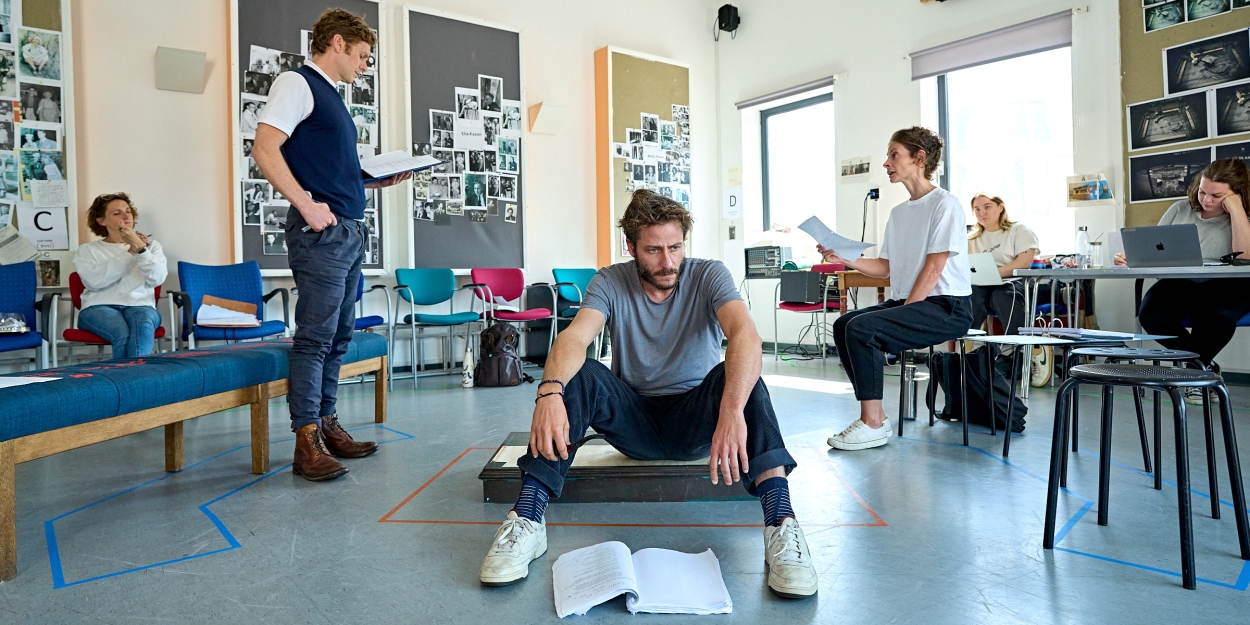Review Roundup: HERE IN AMERICA at Orange Tree Theatre
Performances run at Orange Tree Theatre until 19th October 2024.

The world première of David Edgar’s Here in America is currently running at the Orange Tree Theatre. The new political drama explores a confrontation between two titans of stage and screen, Elia Kazan and Arthur Miller in 1950s America with cast featuring Michael Aloni as Art (Arthur Miller), Jasmine Blackborow as Miss Bauer (Marilyn Monroe), Faye Castelow as Day (Molly Kazan) and Shaun Evansas Gadg (Elia Kazan).
On a rainswept afternoon in 1952, Hollywood and Broadway’s leading director, Elia Kazan met his closest collaborator, the playwright Arthur Miller. As the anti-communist crusade of McCarthyism blacklisted hundreds of their colleagues, Kazan and Miller faced a stark choice. Should they betray their friends, or risk never working again?
David Edgar’s career includes multi award-winning plays for the RSC and National Theatre. His compelling new drama imagines a confrontation between two giants of stage and screen, both passionately involved with an actress about to become the most famous movie star in the world. See what the critics are saying...
Louise Penn, BroadwayWorld: Here In America was a play I came to with high expectations, but it fell somewhat short for me, with a plot adding little to what we already know, and with nothing much to offer to audiences not already interested in the characters or the topic. Little touches like the scrabble game were interesting but then forgotten, a later speech by Monroe about standing up to racism felt a little forced.
Arifa Akbar, The Guardian: What saves the play, in part, is the cleanness of direction by James Dacre, staged on Simon Kenny’s simple set design of benches, coffee table and autumnal leaves. But the complicated arguments that eventually surface also grip. Like Miller himself, Edgar refuses to draw these men either as straightforward heroes or villains; Kazan is not fully a coward, Miller not wholly noble. At its best, their arguments on communism, capitalism, their betrayals and belief systems, tread on some similar ground to CP Taylor’s Good, in how friends justify their actions to one another, and to themselves.
Eleanor, Theatre and Tonic: In conclusion, I went into this play intrigued by its setting and characters. While the core narrative is engaging and raises questions that still resonate today, I found some scenes overly long and, at times, confusing. Although I could follow the story and understand the motivations of the characters, the pacing and length detracted from my overall enjoyment. That said, the lighting, staging, and use of sound were highly effective. The core of the story is strong and the writing and direction are compelling, and with some reworking, it could appeal to an even broader audience.
Gary Naylor, The Arts Desk: It was a bloody time then and Edgar plainly wants to warn of a bloody time to come, but has written rather a bloodless play, better at ideas than drama, more suited to an innovative induction to a module in an American Studies BA than to be considered a fully realised work of drama. Plenty good enough to hold the attention, but there's surely more to be said about these four compelling people caught in a hurricane that was not of their own making.
Clive Davis, The Times: Edgar covers an awful lot of ground in barely an hour and a quarter. If you’re new to the subject, you definitely need to read the chronology in the programme. It’s an odd coincidence that another of Kazan’s projects, the film A Face in the Crowd, has just opened as a musical at the Young Vic. Here in America is much more cerebral, and much more rewarding.
Kirsten Grant, The Telegraph: It’s certainly a fascinating and fertile subject: this feud between two greats of theatre and film had great artistic consequences. Miller was inspired to write The Crucible about the Salem witch-trials – a clear allegory for McCarthyism and the effects of wrongful accusation – while Kazan’s 1954 film On the Waterfront, where Marlon Brando’s dockworker stands up to a corrupt union by informing, won eight Oscars. Meanwhile, Marilyn Monroe, who both men were involved with, was a central figure during all of this. Miller used his engagement to Monroe as political capital when he himself was hauled in front of the HUAC – a speech that is reenacted compellingly here.
Reader Reviews

Videos

